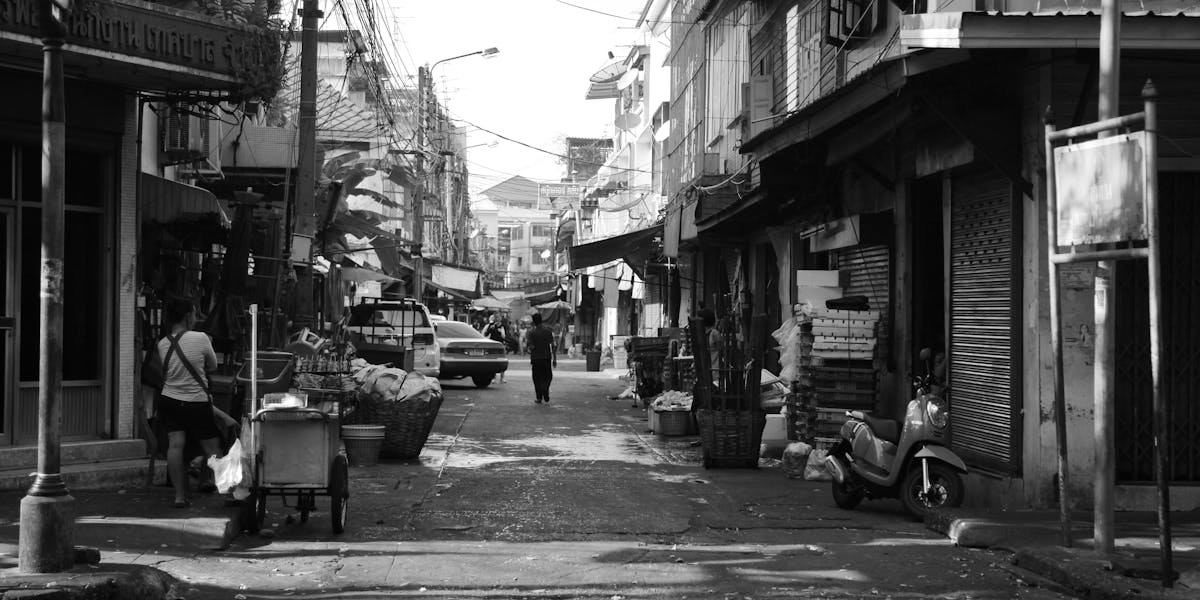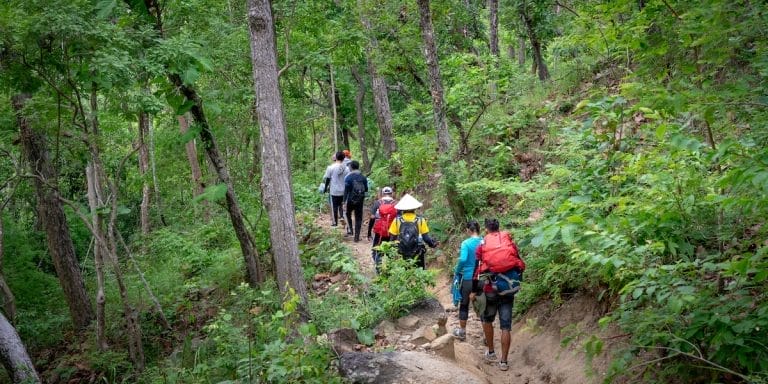Arrival and Transportation in Asia: A Guide to Navigating the Continent
Arrival and transportation are crucial aspects to consider when traveling to Asia countries. With the increasing globalization and accessibility, the significance of efficient arrival and transportation systems cannot be overstated. Asia, being the largest and most populous continent, offers a diverse range of cultures, landscapes, and attractions. Navigating through this vast region can be an exciting adventure, but it also requires careful planning and consideration.
Asia’s global impact in various sectors, including tourism, trade, and technology, has made it a popular destination for travelers from all around the world. The continent’s economic growth and development have led to significant advancements in transportation infrastructure, making it easier for visitors to explore its wonders.
From bustling metropolises to serene rural areas, Asia offers a multitude of transportation options to cater to different preferences and budgets. Whether it’s by air, rail, road, or water, travelers can find convenient and reliable means to reach their desired destinations.
Furthermore, the diversity of Asia’s transportation systems reflects the region’s rich cultural heritage. Traditional modes of transportation, such as rickshaws, tuk-tuks, and sampans, coexist with modern and efficient networks of high-speed trains, expressways, and airlines.
Understanding the intricacies of arrival and transportation in Asia is essential for a smooth and enjoyable journey. This guide aims to provide valuable insights, tips, and recommendations to help travelers navigate the complexities of reaching and moving around Asia’s diverse countries.

Embark on an Unforgettable Journey through Asia: Discover the Secrets of Arrival and Transportation
Imagine stepping foot onto the vibrant streets of Asia, where ancient traditions blend seamlessly with modern marvels. As you breathe in the intoxicating scents and soak in the mesmerizing sights, you can’t help but marvel at the wonders that await. But how do you navigate this vast continent, with its myriad of cultures and landscapes? Fear not, for we are here to guide you through the labyrinth of arrival and transportation in Asia.
Uncover the hidden gems of Asia’s arrival and transportation systems, as we delve into the fascinating fusion of old and new. From the iconic rickshaws that whisk you through narrow alleyways, to the sleek bullet trains that traverse the sprawling landscapes, Asia’s transportation options are as diverse as its people.
Join us on this exhilarating journey, where we unravel the secrets of Asia’s arrival and transportation. Whether you’re a seasoned traveler or embarking on your first adventure, our research will equip you with the knowledge and insights to make your journey seamless and unforgettable.

Arrival
When arriving at your destination, it is important to be prepared and informed to ensure a smooth transition from the airport or train station to your final destination. Familiarize yourself with the local transportation options available, such as taxis, public buses, trains, or rental cars. Research the most convenient and cost-effective mode of transportation based on your needs and budget.
If you are arriving by air, check the airport’s website or contact the airline for information on ground transportation services. Many airports have designated taxi stands or shuttle services that can take you to your desired location. Some airports also have public transportation options, such as buses or trains, that connect to the city center or other popular destinations.
If you are arriving by train, research the train station’s location and nearby transportation options. Many train stations have taxi stands or public transportation services available just outside the station. It is advisable to book a taxi in advance or use a ride-hailing app to ensure a hassle-free experience.
Transportation
Transportation plays a crucial role in exploring a new destination. Understanding the transportation system of your chosen location will help you navigate the city or country with ease. Public transportation, such as buses, trams, and trains, is often a convenient and cost-effective option for getting around.
Many cities have well-developed public transportation networks that cover major attractions, business districts, and residential areas. Research the local transportation maps, schedules, and ticketing options to plan your journeys efficiently. Some cities offer discounted travel cards or passes for tourists, which can provide unlimited travel within a specified period.
Taxis are another popular mode of transportation, especially for shorter distances or when traveling with heavy luggage. Make sure to use licensed taxis and agree on the fare before starting your journey. Ride-hailing apps are also widely available in many cities, offering a convenient and often cheaper alternative to traditional taxis.
If you prefer more flexibility and independence, renting a car can be a viable option. Research local driving regulations, road conditions, and parking facilities before deciding to rent a car. It is also important to familiarize yourself with the local traffic rules and signage to ensure a safe and smooth driving experience.
Lastly, walking and cycling can be enjoyable ways to explore smaller areas or scenic routes. Many cities have pedestrian-friendly streets, dedicated bike lanes, and bike-sharing services for tourists. Always prioritize safety and follow local rules and regulations when walking or cycling.

When it comes to arriving at your destination, being well-prepared and informed is key. Take the time to familiarize yourself with the local transportation options available to ensure a smooth transition from the airport or train station to your final destination. Whether it’s taxis, public buses, trains, or rental cars, understanding the most convenient and cost-effective mode of transportation based on your needs and budget is essential.
If you’re arriving by air, it’s a good idea to check the airport’s website or contact the airline for information on ground transportation services. Many airports have designated taxi stands or shuttle services that can take you directly to your desired location. Additionally, some airports offer public transportation options like buses or trains that connect to the city center or other popular destinations.
For those arriving by train, it’s important to research the train station’s location and nearby transportation options. Many train stations have taxi stands or public transportation services available just outside, making it easy to continue your journey. To ensure a hassle-free experience, consider booking a taxi in advance or using a ride-hailing app.
Understanding the transportation system of your chosen destination is crucial for exploring it with ease. Public transportation, such as buses, trams, and trains, is often a convenient and cost-effective option for getting around. Many cities have well-developed public transportation networks that cover major attractions, business districts, and residential areas. To plan your journeys efficiently, make sure to research local transportation maps, schedules, and ticketing options.
In some cities, you may find discounted travel cards or passes for tourists, providing unlimited travel within a specified period. Taxis are another popular mode of transportation, especially for shorter distances or when carrying heavy luggage. Remember to use licensed taxis and agree on the fare before starting your journey. Alternatively, ride-hailing apps can offer a convenient and often more affordable alternative to traditional taxis.
If you prefer flexibility and independence, renting a car can be a viable option. However, it’s crucial to research local driving regulations, road conditions, and parking facilities beforehand. Familiarize yourself with the local traffic rules and signage to ensure a safe and smooth driving experience.
For those who enjoy a more leisurely pace, walking and cycling can be enjoyable ways to explore smaller areas or scenic routes. Many cities have pedestrian-friendly streets, dedicated bike lanes, and bike-sharing services for tourists. Always prioritize safety and follow local rules and regulations when walking or cycling.
By being well-informed and prepared, you can make the most of your arrival and transportation experiences, ensuring a smooth and enjoyable journey.

One important aspect of being well-informed and prepared for your arrival and transportation experiences is to research and familiarize yourself with the local transportation options available at your destination. This can include public transportation systems such as buses, trains, and subways, as well as taxi services or ride-sharing apps. Understanding how these systems work, their schedules, and any associated costs can help you navigate your way around the city more efficiently. Additionally, it is advisable to have a backup plan in case of any unexpected delays or changes in your travel arrangements. This could involve having contact information for local transportation providers or keeping a map handy to navigate your way if needed. Being prepared and having a good understanding of the transportation options available can greatly enhance your travel experience and make your journey more enjoyable.

Case Study 1: Airport Arrival
John, a frequent business traveler, arrived at the airport for his flight. He had booked a private car service to pick him up from his home and drop him off at the airport. The car arrived on time, and John had a comfortable and stress-free ride to the airport. Upon arrival, he quickly checked in his luggage and proceeded to the security checkpoint. Thanks to his pre-check status, he breezed through security and had enough time to relax at the airport lounge before his flight. This case study highlights the convenience and efficiency of pre-arranged transportation options for airport arrivals.
Case Study 2: Public Transportation
Sarah, a tourist visiting a new city, relied on public transportation to explore the area. She purchased a day pass for the local metro system, which allowed her unlimited rides for 24 hours. Sarah used the metro to visit popular tourist attractions, such as museums and landmarks. The metro system was well-connected, and she found it easy to navigate using the provided maps and signs. Sarah appreciated the cost-effectiveness and convenience of public transportation, as it allowed her to explore the city at her own pace. This case study demonstrates the benefits of utilizing public transportation for sightseeing purposes.
Case Study 3: Ride-Sharing Service
Emily, a college student, needed to attend a job interview in a different part of the city. She decided to use a ride-sharing service to reach her destination. Emily booked a ride through a mobile app and was matched with a nearby driver. The driver arrived promptly, and Emily enjoyed a comfortable ride to her interview location. The ride-sharing service provided her with a cost-effective and convenient transportation option, allowing her to arrive on time and without the hassle of finding parking. This case study showcases the convenience and accessibility of ride-sharing services for individual travel needs.
Understanding these real-world examples highlights the importance of arrival and transportation options in enhancing travel experiences and making journeys more enjoyable.

Arrival and transportation play a crucial role in enhancing travel experiences and making journeys more enjoyable. Whether it’s a private car service, public transportation, or ride-sharing, each option offers its own set of conveniences and benefits.
In the case of John, the frequent business traveler, pre-arranged transportation provided him with a stress-free ride to the airport, allowing him to start his journey on a positive note. This highlights the convenience and efficiency of such services for airport arrivals.
Sarah, the tourist, relied on public transportation to explore a new city. The well-connected metro system and the day pass she purchased allowed her to visit various tourist attractions at her own pace, showcasing the cost-effectiveness and convenience of public transportation for sightseeing purposes.
For Emily, the college student, a ride-sharing service was the perfect solution for attending a job interview. The service provided her with a comfortable and timely ride, eliminating the hassle of finding parking and ensuring she arrived on time. This case study emphasizes the convenience and accessibility of ride-sharing services for individual travel needs.
Looking ahead, the future possibilities for arrival and transportation are vast. With advancements in technology, we can expect more efficient and sustainable options to emerge. From autonomous vehicles to improved public transportation systems, the future holds exciting prospects for enhancing travel experiences even further.
Overall, understanding the challenges and possibilities of arrival and transportation allows us to appreciate the importance of these aspects in making our journeys smoother and more enjoyable.

The Rise of Electric and Autonomous Vehicles
In the future, we can expect a significant shift towards electric and autonomous vehicles in the realm of arrival and transportation. As concerns about environmental sustainability grow, more cities and countries are likely to adopt electric vehicles as a means of reducing carbon emissions and promoting cleaner air. This transition will not only benefit the environment but also provide travelers with a more eco-friendly mode of transportation.
Furthermore, the development of autonomous vehicles will revolutionize the way people arrive at their destinations. With self-driving cars becoming more advanced and widely available, travelers can expect a safer and more efficient experience on the roads. Autonomous vehicles have the potential to reduce traffic congestion, enhance road safety, and provide a stress-free travel experience for passengers.
Integration of Mobility-as-a-Service (MaaS)
Mobility-as-a-Service (MaaS) is an emerging concept that aims to integrate various transportation modes into a single platform, offering travelers seamless and convenient options. In the future, MaaS platforms will become more sophisticated, allowing users to plan and book their entire journey using a single app. This means travelers can seamlessly switch between different modes of transportation, such as buses, trains, taxis, and even bicycles, without the need for multiple tickets or apps.
By integrating different transportation options, MaaS will provide travelers with greater flexibility and accessibility, making it easier to navigate unfamiliar cities and explore new destinations. This technology will empower travelers to make informed decisions about the most efficient and cost-effective routes, ultimately enhancing their overall travel experience.
Smart Infrastructure and Real-Time Updates
The future of arrival and transportation will also involve the development of smart infrastructure and real-time updates. Cities will invest in advanced technologies to create intelligent transportation systems that can monitor traffic flow, optimize routes, and provide real-time updates to travelers.
Imagine a scenario where travelers receive instant notifications about delays, alternative routes, or changes in transportation schedules. This level of information will enable travelers to make informed decisions and adjust their plans accordingly, reducing frustration and maximizing their time efficiency.
Additionally, smart infrastructure will enable the integration of various modes of transportation, such as buses, trains, and bicycles, allowing travelers to seamlessly transfer between different modes without any hassle.
Enhanced Accessibility and Inclusivity
The future of arrival and transportation will prioritize enhanced accessibility and inclusivity for all travelers. Cities and transportation providers will invest in infrastructure and services that cater to the needs of individuals with disabilities, the elderly, and those with limited mobility.
Expect to see more accessible vehicles, ramps, elevators, and designated spaces for wheelchair users in public transportation systems. Furthermore, advancements in technology will enable real-time translations and audio announcements in multiple languages, making it easier for international travelers to navigate and understand transportation systems.
The goal is to create a transportation network that is accessible and user-friendly for everyone, ensuring that no traveler is left behind and that everyone can enjoy a seamless and enjoyable journey.

The future of arrival and transportation is set to undergo significant changes, with electric and autonomous vehicles taking center stage. As concerns for the environment grow, more cities and countries are likely to adopt electric vehicles to reduce carbon emissions and promote cleaner air. This shift not only benefits the environment but also provides travelers with a more eco-friendly mode of transportation.
In addition to electric vehicles, the development of autonomous vehicles will revolutionize the way people travel. With self-driving cars becoming more advanced and widely available, travelers can expect a safer and more efficient experience on the roads. Autonomous vehicles have the potential to reduce traffic congestion, enhance road safety, and provide a stress-free travel experience for passengers.
Another emerging concept that will shape the future of arrival and transportation is Mobility-as-a-Service (MaaS). MaaS aims to integrate various transportation modes into a single platform, offering travelers seamless and convenient options. In the future, MaaS platforms will become more sophisticated, allowing users to plan and book their entire journey using a single app. This means travelers can seamlessly switch between different modes of transportation without the need for multiple tickets or apps, providing greater flexibility and accessibility.
Smart infrastructure and real-time updates will also play a crucial role in the future of arrival and transportation. Cities will invest in advanced technologies to create intelligent transportation systems that can monitor traffic flow, optimize routes, and provide real-time updates to travelers. Imagine receiving instant notifications about delays, alternative routes, or changes in transportation schedules. This level of information empowers travelers to make informed decisions and adjust their plans accordingly, reducing frustration and maximizing time efficiency.
Enhanced accessibility and inclusivity will be a priority in the future of arrival and transportation. Infrastructure and services will be designed to cater to the needs of individuals with disabilities, the elderly, and those with limited mobility. Expect to see more accessible vehicles, ramps, elevators, and designated spaces for wheelchair users in public transportation systems. Advancements in technology will also enable real-time translations and audio announcements in multiple languages, making it easier for international travelers to navigate and understand transportation systems.
The goal is to create a transportation network that is accessible and user-friendly for everyone, ensuring that no traveler is left behind and that everyone can enjoy a seamless and enjoyable journey.








